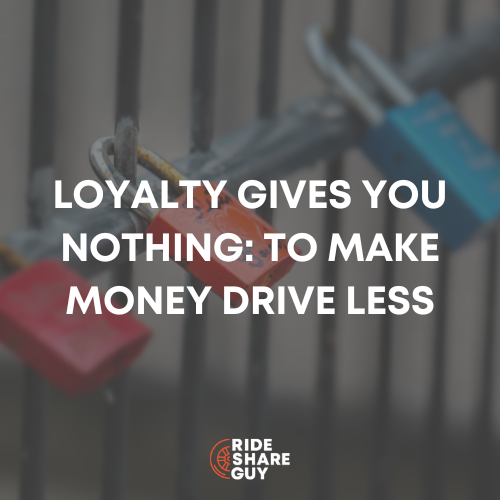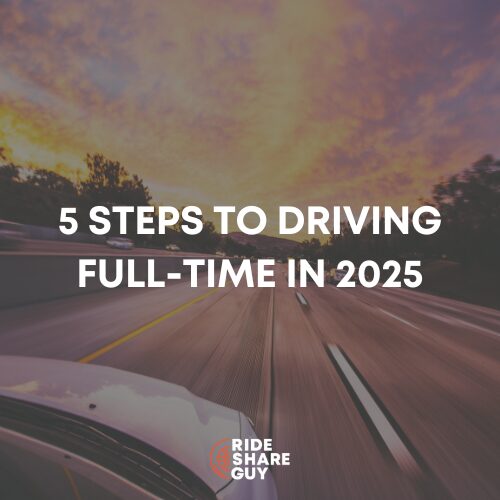Ever have a passenger give you a bad vibe? Ever have a passenger who wasn’t the named person on the account who made you uncomfortable? Do you have to take them? RSG Contributor Gabe Ets-Hokin interviewed one Uber driver with a bad experience and shares some of his own, and tells you what you can do about it.
Maybe something like this has happened to you:
You pick up a passenger, but along the way, she wants to pick up a friend. Once you pick up the friend, you proceed to the original destination, but only she gets out and leaves the second passenger. Even though you’ve ended the ride, the second passenger asks, “do you do cash rides?”
It’s late, you’re tired, and don’t want to argue with the passenger, who says he doesn’t have the Uber app. You agree to take him on what would be a $15 ride, and he shows you a $100 bill.
“Do you have $60?” he asks. That’s a pretty good deal, so you peel three Jacksons from your wad. He hands you the $100, which you quickly make disappear, he gets out.
You get home, kick off your shoes and crawl into bed, exhausted from your 10-hour shift. In the morning, you remember your last ride, and pull the folded-up bill out of your jeans.
It’s fake.
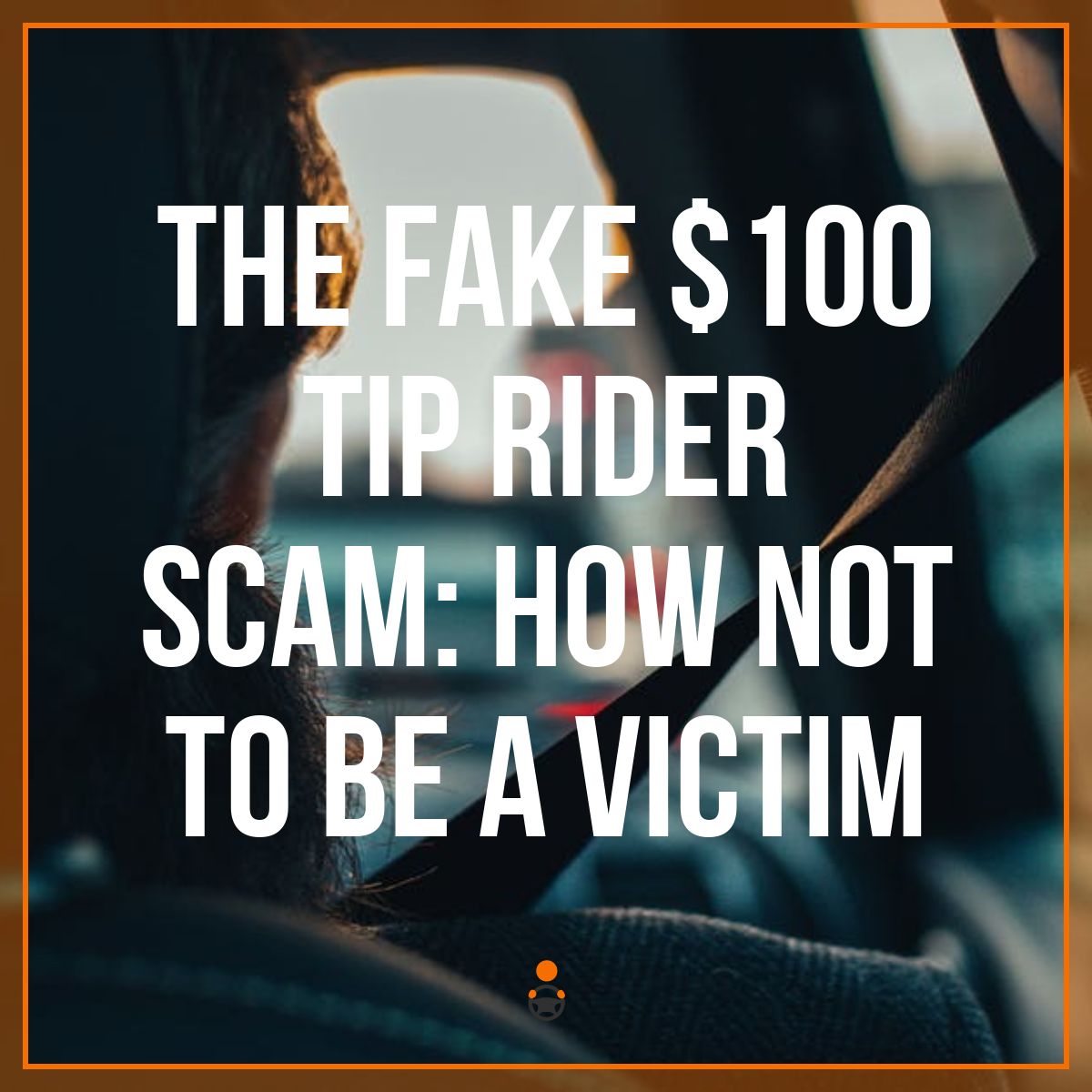

The Change for a Hundred Scam
Pretty good hustle for the con artist and his partner, no? He made $60 and got a free ride home. And it probably happens more than you’d think. Driver Mario C., a San Antonio-area Uber and Lyft driver, reported such an incident to RSG recently.
Mario’s ride, in the early hours of a Saturday morning, was a similar story. After an hour of driving several young women and a man back and forth across San Antonio, the male passenger asked for a ride home for cash. Mario offered to take him for free, since he was going home in that direction anyway. “He offered to pay cash, and showed me a $100 bill, and asked for change. I told him I’d do the ride for free, but I was getting bad vibes off the guy.” When they arrived at the passenger’s address, he put a folded-up bill into Mario’s tip jar. The next morning, he discovered it was fake.
Luckily, Mario has honed his street smarts enough over the past two years of part-time driving to smell a rat, and in fact he was paid by the first passenger in this case. But he did want to alert Uber to the male passenger’s (possible) attempted fraud.
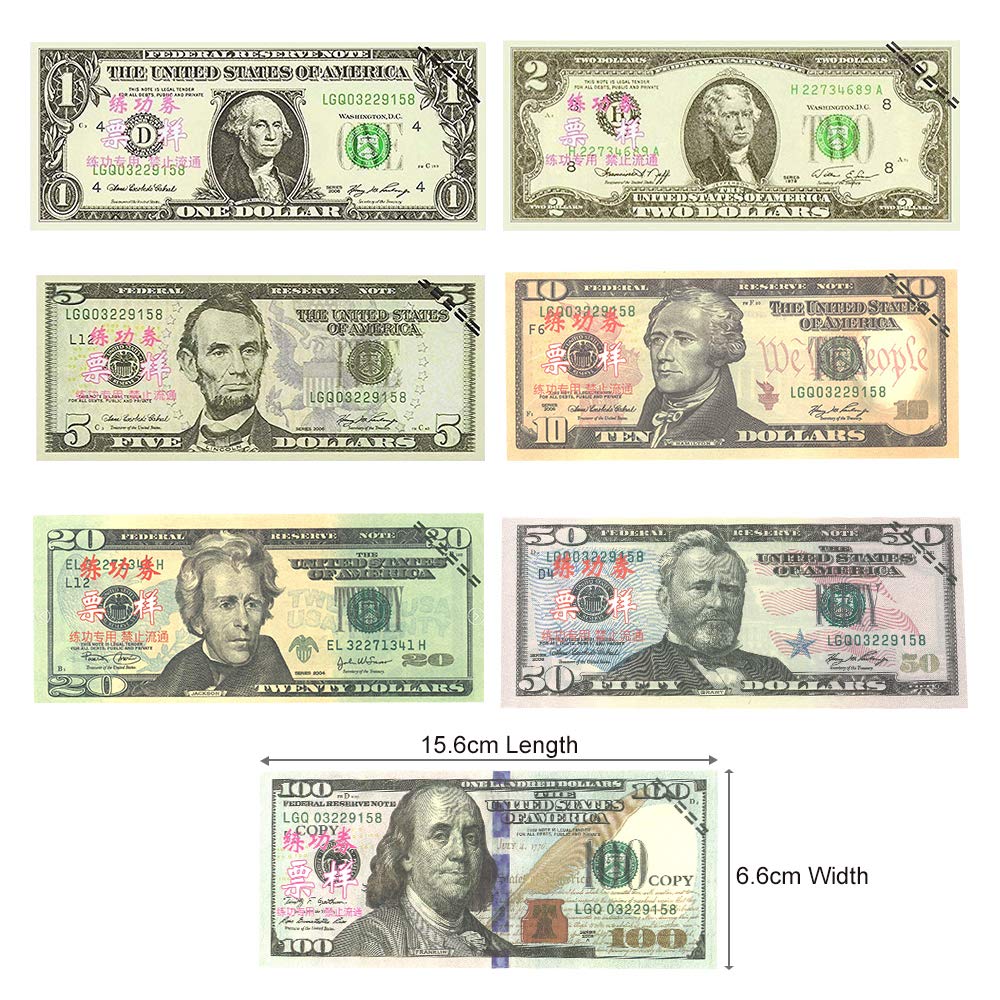
Uber’s response was, to some of us, quite predictable: a boilerplate message informing him “this is certainly not the experience we want drivers to have on Uber…our systems have been instructed not to match you with this rider again.” and that “…disrespectful or inappropriate rider behavior could lead to the deactivation of their account.”
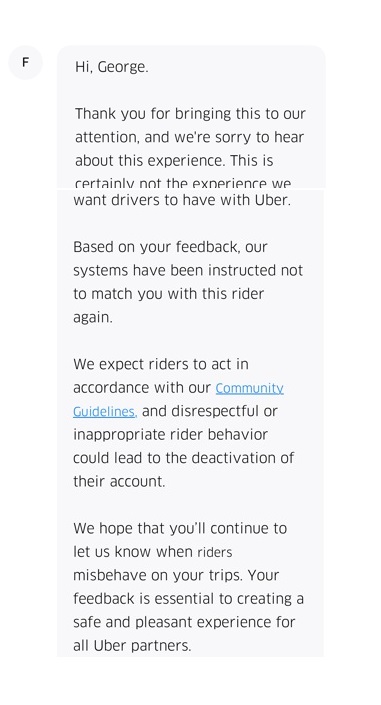
That’s all well and good, you might tell Uber, but what about other drivers? And what if it’s worse than tipping with funny money? For instance, I was assaulted and shoved by an irate Lyft passenger after he kicked my car. I filed a police report and the passenger was arrested and charged and convicted of assault on a transit worker; a serious offense in California. Did Lyft deactivate this passenger? Lyft refused to divulge this passenger’s information, even after he committed an actual, documented crime.
Uber and Lyft’s stated policies on dealing with passengers who may be dangerous or attempting some kind of fraud is…well…there isn’t one, at least not that I could find on either website.
Dealing With Dangerous Passengers
Uber and Lyft don’t have a policy on this because they very clearly want you to only pick up the named passenger and their accompanied guests. If they aren’t, you don’t have to transport them, especially if they make you feel uncomfortable or unsafe.
By the way, this should include underage passengers, or children without approved safety seats. Either don’t let them in your car, or if you discover they aren’t the named passenger and you’ve already gone a significant distance, take them to a well-lit, public place with plenty of people around, end the ride, and ask them to leave and get another ride.
In God We Trust, All Others Use the App
To its credit, Lyft does post a few safety tips for drivers. A really good one is don’t carry cash, and don’t accept it unless it’s a tip with no strings attached. Muggers and other miscreants (mostly) leave us alone because they don’t want to waste their time; if they think we take cash that perception may change.
Accepting cash for a ride—and I’ll admit to doing this more than once in the past five years—is a bad idea. First, you’re not covered by your platform’s insurance, second, it could lead to deactivation (all the passenger has to do is tell them you took cash and boom: you’re likely done forever) and third, you’re open to the kind of fraud detailed above.
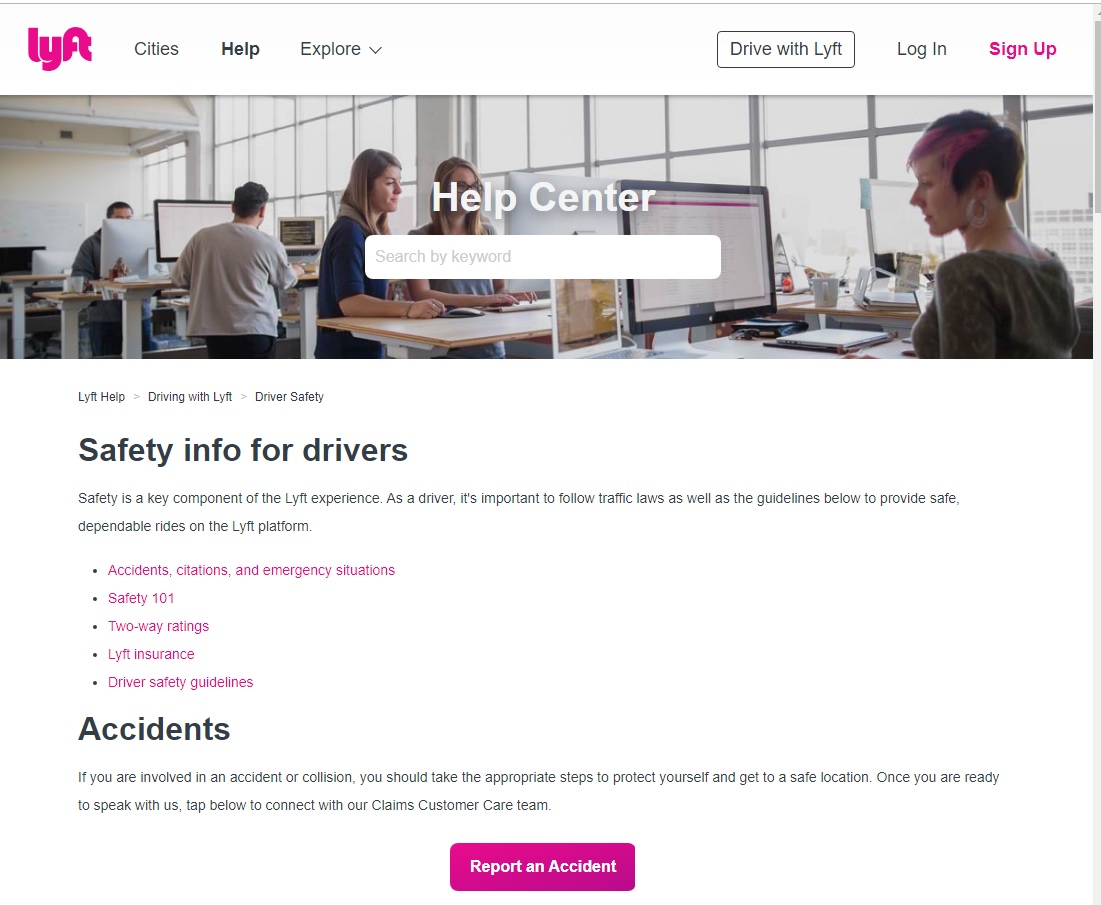
If you’re a nighttime driver like me, you’re used to dealing with drunks, but the real bad behavior starts coming out after the bars close, and traditionally cabbies have been the transport medium to get the criminally minded together with their drugs or hookers or other sundry criminality. Taxis are kind of dying out, but that need for human vice still burns strong. The beauty of app-based platforms is they cast harsh light on anonymous unsavory activity with their need for identity verification and credit cards.
I drove a cab in San Francisco for seven years, and I can attest that sometimes such rides are lucrative—I recall making $130 on a two-hour odyssey involving liquor stores, a codependent relative with a credit card and more than one West Oakland crack house—but not safe or pleasant.
Anyone ever smoke crack in your car? Or spill bodily fluids on your seats after completing a loud and dynamic sex act? No? Good: let’s keep it that way. You’ll likely opt out of this R-Rated lifestyle by refusing to take anyone but authorized users adhering to the terms of service. It’s one of the advantages of being a rideshare driver.
Stay Safe!
Have you been the victim of a scam? What happened? What was Uber or Lyft’s response? Let us know in the comments.
-Gabe @ RSG
